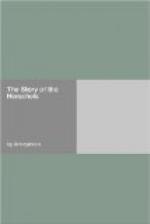The conscientious care and assiduous industry with which Herschel made his measurements of the diameter of the Georgium Sidus (now called Uranus), and his interesting observations of other planets, of double stars with their coloured light, of cometary and nebulous appearances, were truly remarkable; as may be seen by the various papers which he wrote at this time for the Royal Society. In addition to all this labour, he perfected a twelve-inch speculum of vast magnifying power before the spring of 1784; and many hours were spent at the turning-bench, as not a night clear enough for observing ever passed without the devising of improvements in the mounting and motion of the various instruments then in use, or the test and trial of newly-constructed “eyepieces,” most of which were executed by Herschel’s own hands. “Wishing to save his time, he began to have some work of that kind done by a watchmaker, who had retired from business, and lived on Datchet Common; but the work was so bad, and the charges [were] so unreasonable, that he could not be employed. It was not till some time afterwards, in his frequent visits to the meetings of the Royal Society (made in moonlight nights), that he had an opportunity of looking about for mathematical workmen, opticians, and founders. But the work seldom answered expectation, and it was kept to be executed with improvements by Alexander during the few months he spent with us.”
* * * * *
In July 1783 Herschel began his observations with his large twenty-foot telescope, though it was in an unfinished state; and his sister watched and waited with much apprehension when she knew him to be elevated some fifteen feet or more on a temporary crossbeam instead of a safe gallery. Here it is needful to explain, perhaps, that these huge astronomical telescopes are not used like ordinary glasses, to one end of which the observer applies his eye; the objects towards which the tube is directed being thrown upon a large mirror, which is attached to it externally at some distance from the ground. The observer, therefore, needs to be mounted on an elevated platform or gallery, from which he can conveniently inspect




